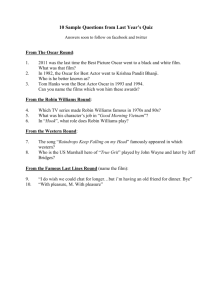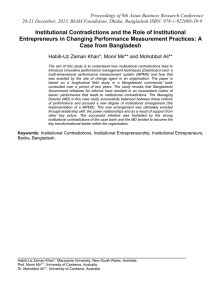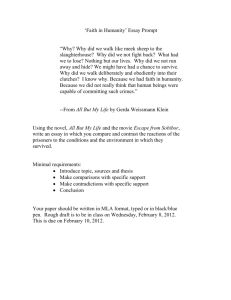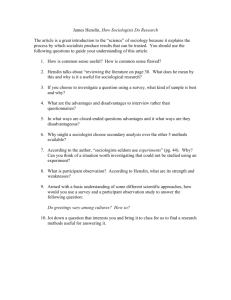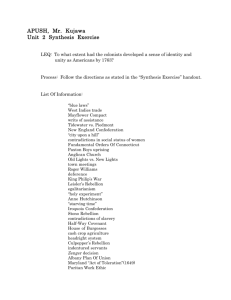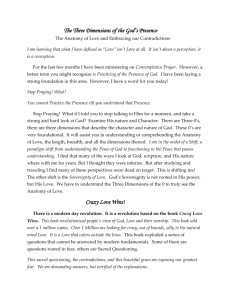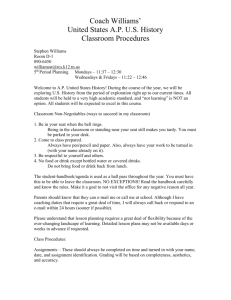02_04_Outline
advertisement
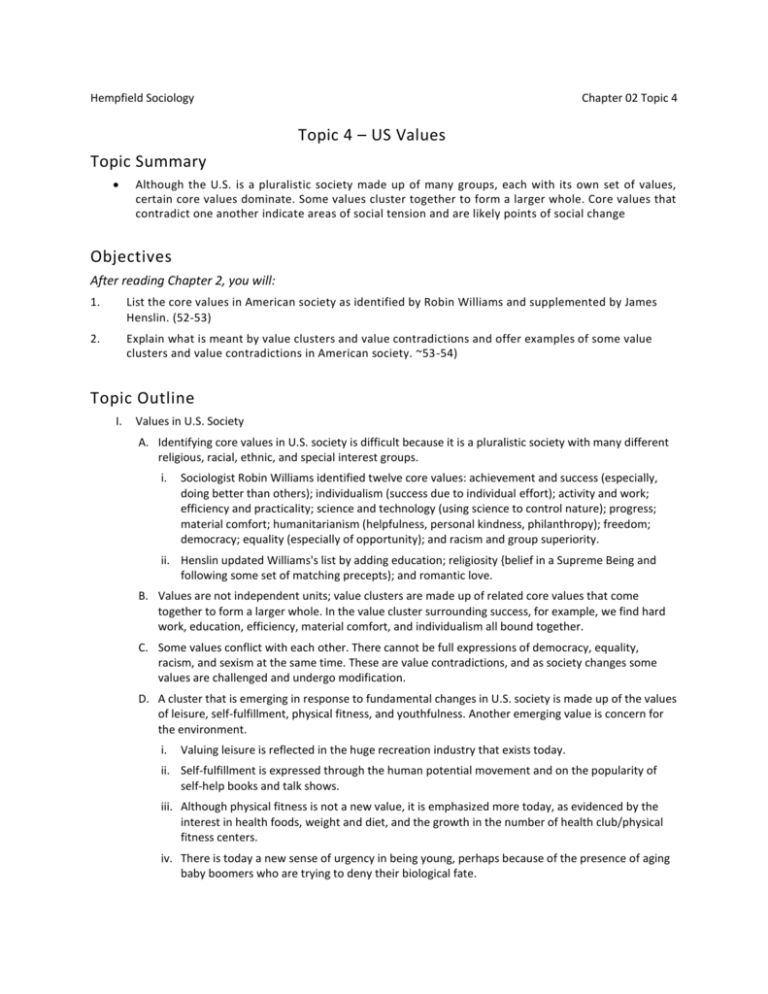
Hempfield Sociology
Chapter 02 Topic 4
Topic 4 – US Values
Topic Summary
Although the U.S. is a pluralistic society made up of many groups, each with its own set of values,
certain core values dominate. Some values cluster together to form a larger whole. Core values that
contradict one another indicate areas of social tension and are likely points of social change
Objectives
After reading Chapter 2, you will:
1.
List the core values in American society as identified by Robin Williams and supplemented by James
Henslin. (52-53)
2.
Explain what is meant by value clusters and value contradictions and offer examples of some value
clusters and value contradictions in American society. ~53-54)
Topic Outline
I.
Values in U.S. Society
A. Identifying core values in U.S. society is difficult because it is a pluralistic society with many different
religious, racial, ethnic, and special interest groups.
i.
Sociologist Robin Williams identified twelve core values: achievement and success (especially,
doing better than others); individualism (success due to individual effort); activity and work;
efficiency and practicality; science and technology (using science to control nature); progress;
material comfort; humanitarianism (helpfulness, personal kindness, philanthropy); freedom;
democracy; equality (especially of opportunity); and racism and group superiority.
ii. Henslin updated Williams's list by adding education; religiosity {belief in a Supreme Being and
following some set of matching precepts); and romantic love.
B. Values are not independent units; value clusters are made up of related core values that come
together to form a larger whole. In the value cluster surrounding success, for example, we find hard
work, education, efficiency, material comfort, and individualism all bound together.
C. Some values conflict with each other. There cannot be full expressions of democracy, equality,
racism, and sexism at the same time. These are value contradictions, and as society changes some
values are challenged and undergo modification.
D. A cluster that is emerging in response to fundamental changes in U.S. society is made up of the values
of leisure, self-fulfillment, physical fitness, and youthfulness. Another emerging value is concern for
the environment.
i.
Valuing leisure is reflected in the huge recreation industry that exists today.
ii. Self-fulfillment is expressed through the human potential movement and on the popularity of
self-help books and talk shows.
iii. Although physical fitness is not a new value, it is emphasized more today, as evidenced by the
interest in health foods, weight and diet, and the growth in the number of health club/physical
fitness centers.
iv. There is today a new sense of urgency in being young, perhaps because of the presence of aging
baby boomers who are trying to deny their biological fate.
Hempfield Sociology
Chapter 02 Topic 4
v. Our history suggests a lack of concern for the environment; it was generally viewed as a
challenge to be overcome. However, there is today a genuine concern for protecting the
environment.
E. Core values do not change without meeting strong resistance.
i.
Change is seen as a threat to the established way of life, something that will undermine people's
present and their future.
ii. Today's clash in values is often so severe that the term "culture wars" has been coined to refer to
it.
F. Values and their supporting beliefs may blind people to other social circumstances. Success stories
blind many people in the United States to the dire consequences of family poverty, lack of education,
and dead-end jobs.
G. Ideal culture refers to the ideal values and norms of a people. What people actually do usually falls
short of this ideal, and sociologists refer to the norms and values that people actually follow as real
culture.
KEY TERMS
After studying the chapter, review the definition for each of the following terms.
value clusters: a series of interrelated values that together form a larger whole (53)
value contradictions: values that conflict with one another; to follow the one means to come into conflict with the
other (54)
values: the standards by which people define what is desirable or undesirable, good or bad, beautiful or ugly (46)
KEY PEOPLE
Review the major theoretical contributions or findings of these people.
Robin Williams: He identified twelve core U.S. values. (52)
STUDENT APPLICATION PROJECTS
This is your opportunity to apply the sociological perspective to the world around you. The projects in this
section refer to material introduced in this chapter of your text. These projects help you apply the
sociological perspective "down to your earth ...down to your daily life. "
1.
Think about the text's various discussions about values, core values, .and emerging values. Further, think
about yourself, your parent(s), and your grandparent(s). Do different generations view values and the
priority of certain values differently? Or, are certain values un iversal across generations in the United
States. Provide illustrations from your own family.
